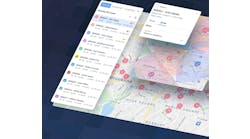The Truth about Tier 4 Engine Regulations and Hamburgers
Do you like char-broiled hamburgers? I certainly do and it's got to be one of North America's most popular foods. Well, did you know that the cooking of one char-broiled hamburger emits as many particulates as a 20-ton regulated Class A truck — starting with 2010 models — driving down the freeway for 143 miles?
This startling statement comes from a piece of research quoted from the New York Times by ENR deputy editor Tudor Van Hampton recently. That's how clean diesel engines have become. Seems hard to believe but such were the findings of a University of California at Riverside research team. Whether 100-percent accurate or not, there's a lot of research supporting some dramatic claims. For example, Brad Allen, vice president of product support and engineering for Genie Industries, says it would take 60 of the company's Tier 4 interim boomlifts to put out the same emissions as the first boom Genie manufactured in 1986.
So the environment is definitely benefiting from Tier 4. I won't get on a soap box about why that matters. But I would like to look at some of the impact the legislation might have on the equipment business and the rental industry, points that were discussed at a panel at last month's Lift & Access Showcase.
It's pretty well known by now that Tier 4 engines and the machines that contain them will be more expensive and obviously that's not something a rental company or any equipment buyer is going to rejoice about. But if what the engineers who have worked on Tier 4 engines are saying is true, we're going to see significantly improved fuel efficiency and performance from Tier 4 units. And with every new level comes other new technological advances.
While the actual cost of buying a Tier 4 machine will go up, cost of ownership may go down. Better fuel efficiency obviously means lower fuel costs. Just as with more recent model automobiles, for the most part, less maintenance will be required. Rental companies might save on service visits to machines on jobsites, that is additional fuel and cost savings. As more advancements are made in transmission of remote diagnostic data available, the savings increase incrementally. For example, John Deere now installs its JD Link telematics system on all of its Tier 4 interim-powered machines. While a lot of companies don't take advantage of this information, it can result in significant savings if applied properly.
In the process of doing the research to improve Tier 4 engines and the machines they go in, engineers have made a variety of other improvements, from improved drive trains to better engine compartment location and many other areas. Companies had to improve engines, redesign machines to fit different-shaped engines and in the process made other improvements. Another savings is that more machines now have auto-idle functions and automatic shutdown. When idling is reduced and machines shut down, obviously fuel is saved.
There are some valid concerns about the resale value of Tier 4 machines, which won't really hit too much for a few years until people start re-selling them. One concern is over the sale of machines to other countries because Tier 4 machines require low-sulfur diesel fuel, which is only available at this point in North America, Europe and Japan, thus limiting the marketability of those machines internationally. With Tier 4 regulations not applicable in most countries, this is a concern. There is the possibility that low-sulfur diesel will become more widely available in coming years. This is an issue we will know more about as it unfolds in the coming months and years.
There will also be marketing benefits, even though these aren't immediately apparent. Most construction contractors are not going to ask you about emissions levels, but increasingly, especially on government and industrial jobs, this will matter in the coming years if it doesn't already.
There is a lot about the impact of Tier 4 that it is much too soon to answer and time will tell. In next month's issue we'll have a more in-depth report on the Tier 4 seminar at the Lift & Access Showcase and some of the others issues it raised as well as more equipment presentations. We will be examining the impact of Tier 4 on an ongoing basis and eagerly welcome comment from our readers.





